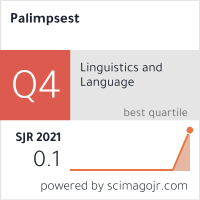PRESENTATION OF PANDEMICS IN LITERATURE
DOI:
https://doi.org/10.46763/PALIM21116125tAbstract
Covid-19, like other outbreaks of infectious diseases, has reawakened our interest in pandemic literature. While ordinary people, in their feeling of fear and uncertainty, tend to look back at such books, hoping they will discover what to expect, learn how to behave, and find some hope and solace in the fact that people do manage to overcome such experiences and that all pandemics eventually end, literary critics dig deep into these stories, looking for similarities and differences, studying the ways pandemics are depicted, and exploring specific narrative techniques, language, style and motifs. On the other hand, the interest also rises among authors, who, inspired by the newest pandemic, decide to write books with similar topics, mostly with the purpose of warning people that they have to change something in their behaviour and everyday practices in order to avoid the repetition of similar diseases. The purpose of this paper is first to explore the role of literature during a pandemic. Second, the paper will give a review of various topics and genres connected with pandemic literature. Finally, the paper will attempt to examine the parallels between pandemic literature and real pandemics, especially Covid-19.
Keywords: pandemic literature, plague, flu, virus, uncertainty, fear, conspiracy theories.


